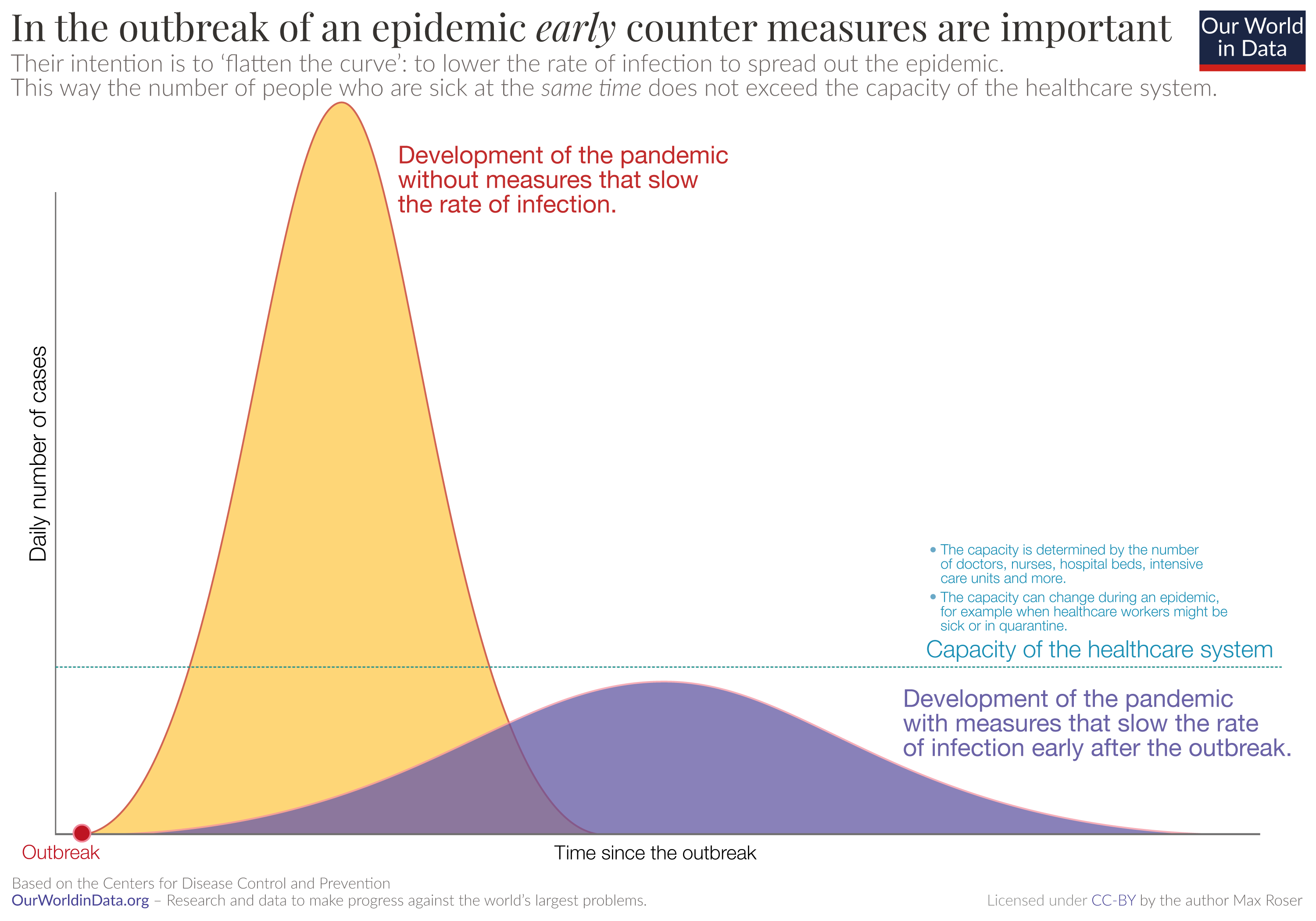COVID-19
This afternoon Carnegie Mellon University announced that they will be moving all classes online for the rest of the semester to combat the coronavirus. It’s a scary message to get, and I wanted to reassure myself and others by sharing some information that I learned thanks to Greta Thunberg’s Instagram account this morning [1].
As Greta explains (and she has been reading OurWorldInData.org [2]), the reason why CMU and other institutions across the country are limiting social gatherings as much as possible is to try to “flatten the curve” [1],[2]. Simply put, one of the dangers of a pandemic like Covid-19 (as per the W.H.O. [3]) is that the disease could spread so quickly that the number of patients who need to be treated would exceed the capacity of a country’s healthcare system [1],[2]. By taking precautions early - like implementing social distancing - we are trying to slow the spread of the disease. The total number of people who get infected may stay the same, but if we can stretch the number of infections over a longer period of time, then there will be fewer patients that the healthcare system must treat at a given time [2]. The graphic below (thanks to [2]) is a good illustration of what we’re trying to do with social distancing policies.

Figure 1 - “flattening the curve” from [2]
One other thing that OurWorldInData.org suggested we watch is the rate at which the number of infections doubles [2]. Viral diseases spread exponentially, not linearly. In other words, the number of cases is going to increase for a long time, but we are looking for how quickly the number of cases is going to increase. If we can effectively contain the virus, then we slow the rate at which the number of cases increases. According to OurWorldInData.org, the measures imposed by the Chinese and South Korean governments have effectively slowed the rate at which their infection count is doubling [2]. If all countries around the world can do this, then we know that our precautions are having a positive effect because the rate of infection would double more and more quickly if we did nothing.
I would recommend reading through the report by OurWorldInData.org [2], as well as tracking Covid-19 via the Johns Hopkins University dashboard [4]. You can also read the daily situation reports put out by the W.H.O. [5].
References:
[1] Thunberg, G. Instagram account. https://www.instagram.com/gretathunberg/ Visited 03/11/2020.
[2] Roser, M, Ritchie, H, Ortiz-Ospina, E. “Coronavirus Disease (Covid-19).” Our World in Data. https://ourworldindata.org/coronavirus Visited 03/11/2020.
[3] Chappell, B. “Coronavirus: COVID-19 Is Now Officially A Pandemic, WHO Says.” NPR. https://www.npr.org/sections/goatsandsoda/2020/03/11/814474930/coronavirus-covid-19-is-now-officially-a-pandemic-who-says Visited 03/11/2020.
[4] Johns Hopkins University. “Novel Coronavirus (COVID-19) Cases, provided by JHU CSSE.” https://github.com/CSSEGISandData/COVID-19 Visited 03/11/2020.
[5] World Health Organization. “Coronavirus disease (COVID-2019) situation reports.” https://www.who.int/emergencies/diseases/novel-coronavirus-2019/situation-reports Visited 03/11/2020.
